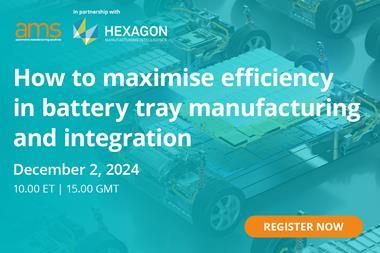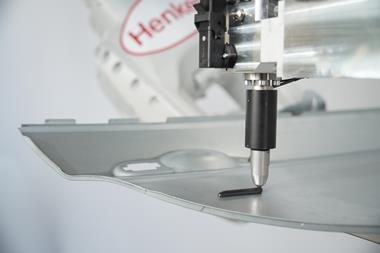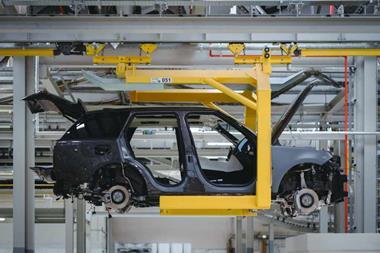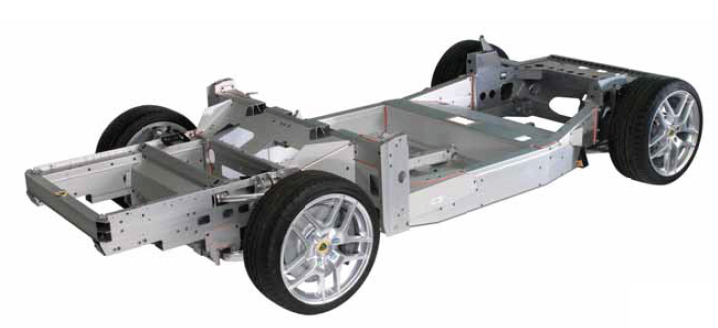
New joining techniques and recent advances in forming technology for aluminium, and how new aluminium products can match steel in crash safety performance
In this energy-conscious age, automotive manufacturers want materials that can project them into that virtuous circle where lightweight construction allows part downsizing, reducing overall vehicle weight and returning improved vehicle fuel economy. Yet faced with a market that places a premium on successively larger models, it is a quest that has largely eluded most carmakers. As each generation of new vehicles increases in size, weight and complexity in order to win customer approval, aluminium has come to be regarded as the material to help reduce the increasing weight of modern vehicles.
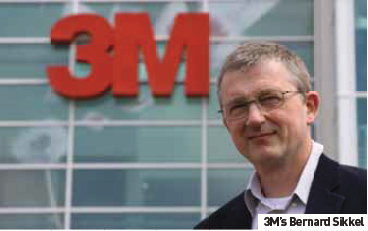 Studies done by Aluminium Transportation suggest that for every kilogram of weight removed from a vehicle structure, a further 680g can be saved as a result of component downsizing. Whilst this precise ratio of primary to secondary weight reduction can perhaps be questioned, the basic principle holds true. The study concludes: “As OEMs look for cost-effective solutions to reducing fuel consumption and emissions of their vehicles, lightweight, high-strength aluminum vehicles with appropriately-sized powertrains are very attractive.” Yet in the process of weight reduction, simple material substitution is rarely the answer. Instead, component design and manufacturing processes must reflect the distinct characteristics of the new materials. Simple usage comparisons between aluminum and steel in vehicle composition can be misleading. Different body construction processes – and most crucial of all, increased production volumes - serve to alter the cost balance and labour content associated with the use of particular materials. Each generation of engineers and designers faces the task of reassessing this ever-shifting balance between time and production. Currently, the balance is in favour of aluminium, with the automotive sector representing the fastest-growing area of consumer-facing usage.
Studies done by Aluminium Transportation suggest that for every kilogram of weight removed from a vehicle structure, a further 680g can be saved as a result of component downsizing. Whilst this precise ratio of primary to secondary weight reduction can perhaps be questioned, the basic principle holds true. The study concludes: “As OEMs look for cost-effective solutions to reducing fuel consumption and emissions of their vehicles, lightweight, high-strength aluminum vehicles with appropriately-sized powertrains are very attractive.” Yet in the process of weight reduction, simple material substitution is rarely the answer. Instead, component design and manufacturing processes must reflect the distinct characteristics of the new materials. Simple usage comparisons between aluminum and steel in vehicle composition can be misleading. Different body construction processes – and most crucial of all, increased production volumes - serve to alter the cost balance and labour content associated with the use of particular materials. Each generation of engineers and designers faces the task of reassessing this ever-shifting balance between time and production. Currently, the balance is in favour of aluminium, with the automotive sector representing the fastest-growing area of consumer-facing usage.
Adhesive bonding for high-volume production
Increasing use of aluminium in bonded vehicle structures has been dependant upon advances in build processes and adhesive technologies. Bernard Sikkel, a senior technologist with 3M, says the process of generating and developing new adhesive systems for bonding aluminum and other disparate metals results from a close partnership with OEMs and their Tier One suppliers.
Well-established applications taken from the aerospace industry demonstrate that highly-efficient structural bonding is readily achievable, but the industry’s comparatively low volumes are an ideal fit for the required surface preparation. Sikkel stresses that with considerably higher volumes, increased automation and a comparatively hostile environments, carmakers are looking for structural adhesives that can be applied with a minimum of surface preparation.
3M’s latest SA9820 two-part adhesive is an attempt to meet some of these challenges. The product offers advantages in the assembly process, allowing off-site construction of substructures by suppliers up to sixty days before final vehicle assembly, which in turn allows greater flexibility in outsourcing and longer supply chains. Defects in application can be readily identified with colour-coded adhesive components, a tool to deliver quality assurance in the bonding process. It should be noted that crucial technology gains – which can mark the boundary between the adoption of one material or another – arise most commonly from the practicalities of the production process as much from the cost or sheer technical performance of the associated material.
Surface pretreatments are another area where important developments have appeared; developments that will impact the wider adoption of aluminium. Novelis has pioneered application-specific surface engineering to add value to flat-rolled aluminium carbody sheets. Thin anodic films are generated using an electrolysis process, which has several advantages over conventional surface cleaning and pretreatment methods. The thickness and morphology of the films can be closely controlled and as they consist only of aluminium oxides, they can offer an attractive alternative to competing surface pretreatments.
The films can also be produced with great precision, incorporating continuous barrier layers or layers with controlled porosity and strength. Seen within the context of an increasing interest in adhesive bonding, the anodic films offer enhanced durability and excellent adhesion properties. Further, they prove compatible with press lubricants and all the standard assembly and finishing processes used in highvolume body construction.
Innovation in traditional applications
Innovation is not limited to chassis and body applications. The metal has been the chosen material for piston construction since the earliest days of series production, yet metallurgical advances have now allowed the material to further expand its performance boundaries.
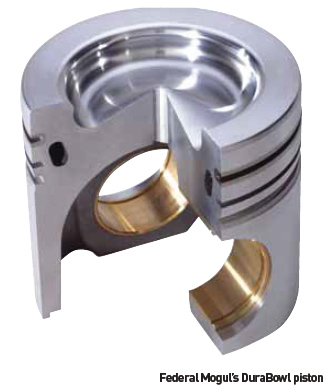 Federal Mogul’s latest developments in high-performance piston design highlight the importance of developing new ways to work and process aluminum in order to enhance its potential. High-performance turbodiesel engines, operating with high boost pressures, pose particular challenges for piston designers. Research conducted by Federal Mogul identified weaknesses caused by silicon particles within the piston crown, which could fail under severe stress, yet elimination of silicon was neither desirable nor appropriate. After extensive testing, the development of the DuraBowl technology gives the aluminium pistons significantly greater thermo–mechanical durability.
Federal Mogul’s latest developments in high-performance piston design highlight the importance of developing new ways to work and process aluminum in order to enhance its potential. High-performance turbodiesel engines, operating with high boost pressures, pose particular challenges for piston designers. Research conducted by Federal Mogul identified weaknesses caused by silicon particles within the piston crown, which could fail under severe stress, yet elimination of silicon was neither desirable nor appropriate. After extensive testing, the development of the DuraBowl technology gives the aluminium pistons significantly greater thermo–mechanical durability.
Frank Doernenberg, Director of Piston Technology at Federal Mogul, explains that of all internal engine components, pistons are the parts operating closest to the threshold of their fatigue capability. Piston crown temperatures in modern engines can be perilously close to the temperature at which aluminium begins to change its physical characteristics. It is against this backdrop that the company’s R&D teams looked to explore the possibility of a remelting process to improve the performance of these vulnerable parts.
Under material test conditions, the remelted material in the DuraBowl piston exceeded the durability of the cast material by a minimum factor of four. Federal Mogul attributes this improved performance to the structural refinement which results in lower thermal cyclic loadings in the microstructure. The modification to the bowl rim and bowl base often prevents thermo-mechanical fatigue, offering enhanced potential for cast aluminium pistons. For Federal Mogul, these developments go hand in hand with the continued development of non-destructive test technologies and quality inspection regimes.
Formability issues
For some years, mass market cars have been made with aluminium panels. Key to this usage has been the enhancedformability resulting from developments in both the process and in the metal alloys. Quick plastic forming, where air pressure is used to shape preheated blanks against a heated dye, carries significant investment costs but offers the prospect of complex aluminium closures becoming ever-more common in mass-market vehicles. In fact, QPF aluminium can exceed the formability of steel. Barriers to adoption in very large volumes come in the longer cycle times required by the process, but Alcoa has developed alloys with fine grain structures which respond well to plastic forming technology.
Superform Aluminium is another company that offers expertise in the forming of aluminium panels. The company has invested heavily in advanced forming processes linked to CAD/CAM systems. As a result, high-quality panel work with reduced tooling costs for low-volume production can be developed within a very short timeframe. Key to the process is the ability to generate tooling directly from native CAD data supplied by the customer using Catia V5 design software. Post forming fabrication can also be undertaken, offering the manufacturer the opportunity to have components supplied in kit form or in assembled units. The aluminium-bodied Morgan Aero 8 offers such an example, Superform Aluminium supplying the wings of the car in a ready-to-fit form.
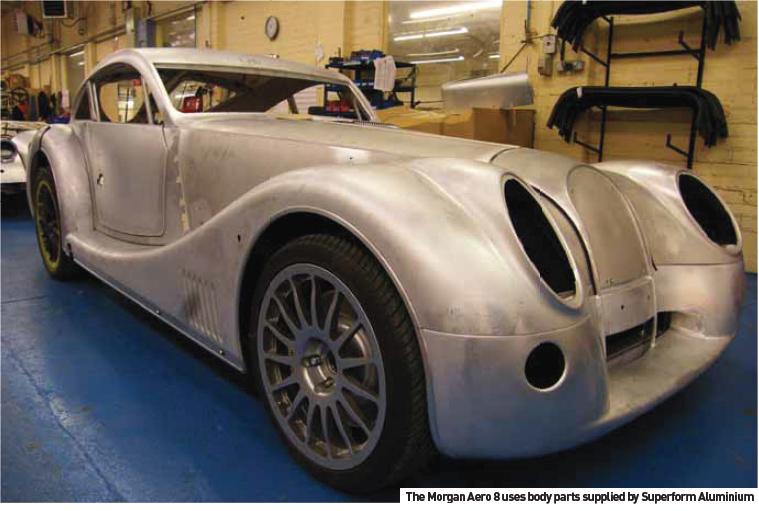
Audi pioneered the use of aluminium extrusions in space frame structures but many other manufacturers have found that aluminium extrusion processes offer the solution for a variety of components. For closures such as doors and bonnets, aluminium is a natural choice, offering weight advantages and good energy absorption. AA6016-series alloys offer appropriate surface quality after forming and compatibility with the OEM paint/flash cycles. Formability remains an issue though, with manufacturers often previously utilising 5-Series alloys for such nonvisible areas as inner door panels. Development work by Hydro Aluminium has resulted in the introduction of 6/30+ Series sheet which offers a 30% improved elongation-tofracture ratio. This enhanced formability simplifies panel construction and allows complex single-sheet specification alloy panel structures to be economically produced.
Stabilized aluminium foam and impact absorption
Aluminium has considerable energy absorption properties, whether incorporated into body structures or when used as a specific energy absorbing material. In recent years, Stabalised Aluminium Foam (SAF), a material technology originally developed by Alcan and Norsk Hydro and now commercialised by Cymat Technologies, has attracted interest in the areas of structural reinforcement and crash management. SAF is a metal matrix composite composed of aluminium alloy with added ceramic particles, where the particles stabilize the foam bubbles, preventing their collapse.
The material is formed by injecting gas into a molten metal matrix composite, which promotes foaming on the surface of the material. The foam can then be drawn off, with the texture and composition of the cells controlled by the percentage mix. Crash-absorbing structures using aluminium deformable extrusions filled with SAF provide high levels of energy absorption with a minimum weight penalty. In addition, the added SAF modifies the way in which the outer crash box structure loads under impact, allowing it to fold more comprehensively and thus absorb more energy. Three-dimensional SAF castings can be used to provide lightweight reinforcement to side impact and rollover protection structures, whilst the replacement of sand cores with SAF cores in aluminium casting processes offer enhanced NVH properties.
Cymat Technologies continues to explore the potential of low-pressure casting systems for SAF, offering the ability to produce complex shapes with a thin wall aluminium surface skin. The intention is to provide a low-cost alternative to powder metallurgy in the production of complex-shape components.
End-of-life considerations
The future potential of aluminium cannot be estimated based on its attractiveness as a material and any benefit its adoption could bring the end user. Instead, the material must be evaluated against rivals across its total lifespan. To this end, 3M recently hosted a low carbon technology conference where delegates studied end-of-life recycling of carbon composite materials. In contrast to aluminium, where recycling rates are very high and the infrastructure for the recovery of used material is well established, carbon composite materials present new and significant challenges. For real value in the recycling process, the product should be reusable without significant degradation of the material properties; preferred to the production of low-grade, lowvalue products from recycled materials. It is in this respect that established materials like steel and aluminium have, so far, scored heavily.
Evaluating future potential
Recent research undertaken by the University of Aachen compares the potential of different materials with regards to weight reduction in vehicle body structures, in order to address the complex interplay of stiffness requirements, shape, dimensioning and yield strengths as they apply to different materials. Interestingly, it found that carbodies featuring mostly steel components are constructed from steel grades with a yield strength that aluminium can readily match.
Assigning quantitative values for the strength and stiffness of hundreds of different car body components, the study attempted to highlight in a formal and rigorous way the complexity of the issues involved in material choice. With component shape, size and irreducible wall thickness serving to limit the benefits to be gained from using high-strength steels, the report argues that aluminium usage is set to grow disproportionately in comparison to alternatives as vehicle lightweighting advances. The study goes on to suggest that the environmental and safety advantages of aluminium have yet to be fully realized; maximum weight reductions could reach 40%, while still retaining – or improving - vehicle safety. The analysis, which may yet be challenged by those promoting the cause of steel, talks of the comparable figure for steel being approximately 11%. It concludes that the market penetration of aluminium closures, for example, in middle- and budget-range vehicles will continue to grow.
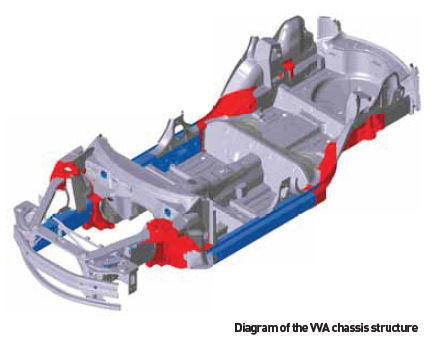
Lotus is famed for having pioneered many vehicle lightweighting techniques. That said, classic Lotus models employed imaginative design rather than advanced materials to improve vehicle performance, with aluminium usage not coming into play until the last decade. While retaining this traditional Lotus philosophy, the current model range employs a more adventurous range of materials, with bonded aluminium chassis structures being first used with the Elise and more recently with the Evora.
Lotus Engineering has been exploring the further potential of lightweight materials, undertaking a study to develop a commercially-viable mass-reduction strategy for mainstream passenger vehicles. The study, released by the International Council on Clean Transportation, says a 38% reduction in vehicle mass can be achieved for only a 3% cost increase using engineering techniques and technologies suitable for high-volume production programmes by 2020. Benchmarked against a current Toyota Venza CUV, Lotus says the 2020 vehicle architecture utilises a mix of stronger and lighter materials, a high degree of component integration, and advanced joining and assembly techniques. The study showed 37% of BIW materials to be made from aluminium, with the material used for the main beam supporting the front bumper and a deformable crash structure, resulting in a 11% reduction in component mass The Lotus Variable Vehicle Architecture (VVA) concept, which exploits the potential of aluminium in imaginative, yet commercially-focused ways, continues to be developed, most recently demonstrated in the Evora Hybrid. The vehicle structure progresses the Lotus ‘bonded and riveted’ technology with the inclusion of new and unique extrusions and folded panels, claimed to provide capacity-increasing build modularity and reduced-cost repairs. The strength and stiffness of the low-volume VVA chassis can be costeffectively modified by varying the wall thickness of the extrusions, without altering the exterior dimensions. Further, the scaleable chassis, which can be extended in width, length and height, opens up options with regards to tailoring chassis stiffness, as well as vastly increasing the number of vehicles that can be developed from this single vehicle architecture.
Inevitably, future material choices will be influenced by the continuing environmental debate and various political initiatives. More than most, the motor industry has seen technologies moulded and shaped by legislative activity. It is no surprise that the European Aluminium Association have been actively encouraging the European Commission and European Parliament to create a regulatory framework that is technologically neutral, while fully recognising the potential of lightweight materials to meet environmental challenges. The extent to which they, and their partners in other key markets, are successful in these endeavours will undoubtedly influence how bright the future is for aluminium.






























